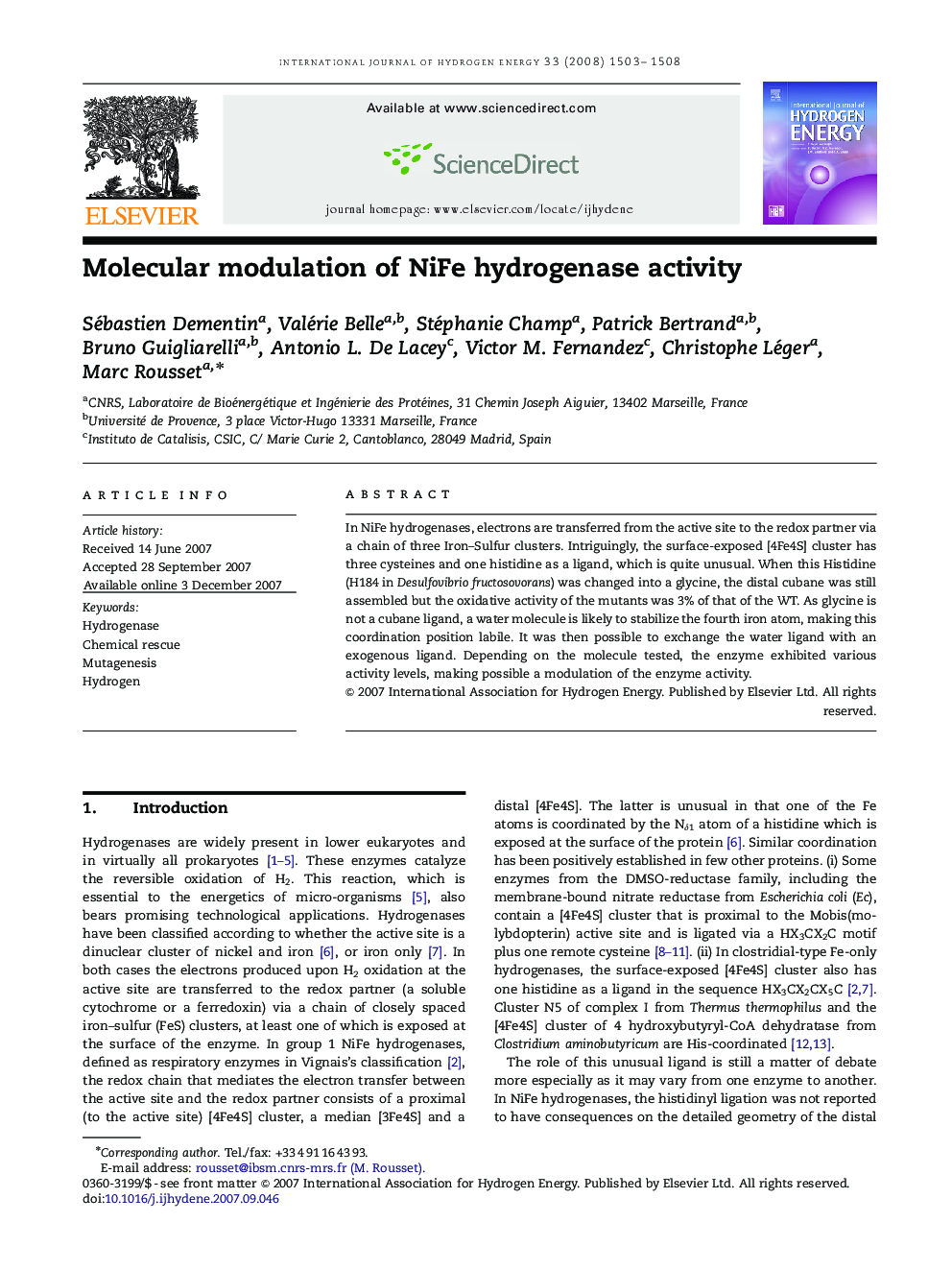| Article ID | Journal | Published Year | Pages | File Type |
|---|---|---|---|---|
| 1281764 | International Journal of Hydrogen Energy | 2008 | 6 Pages |
In NiFe hydrogenases, electrons are transferred from the active site to the redox partner via a chain of three Iron–Sulfur clusters. Intriguingly, the surface-exposed [4Fe4S] cluster has three cysteines and one histidine as a ligand, which is quite unusual. When this Histidine (H184 in Desulfovibrio fructosovorans) was changed into a glycine, the distal cubane was still assembled but the oxidative activity of the mutants was 3% of that of the WT. As glycine is not a cubane ligand, a water molecule is likely to stabilize the fourth iron atom, making this coordination position labile. It was then possible to exchange the water ligand with an exogenous ligand. Depending on the molecule tested, the enzyme exhibited various activity levels, making possible a modulation of the enzyme activity.
